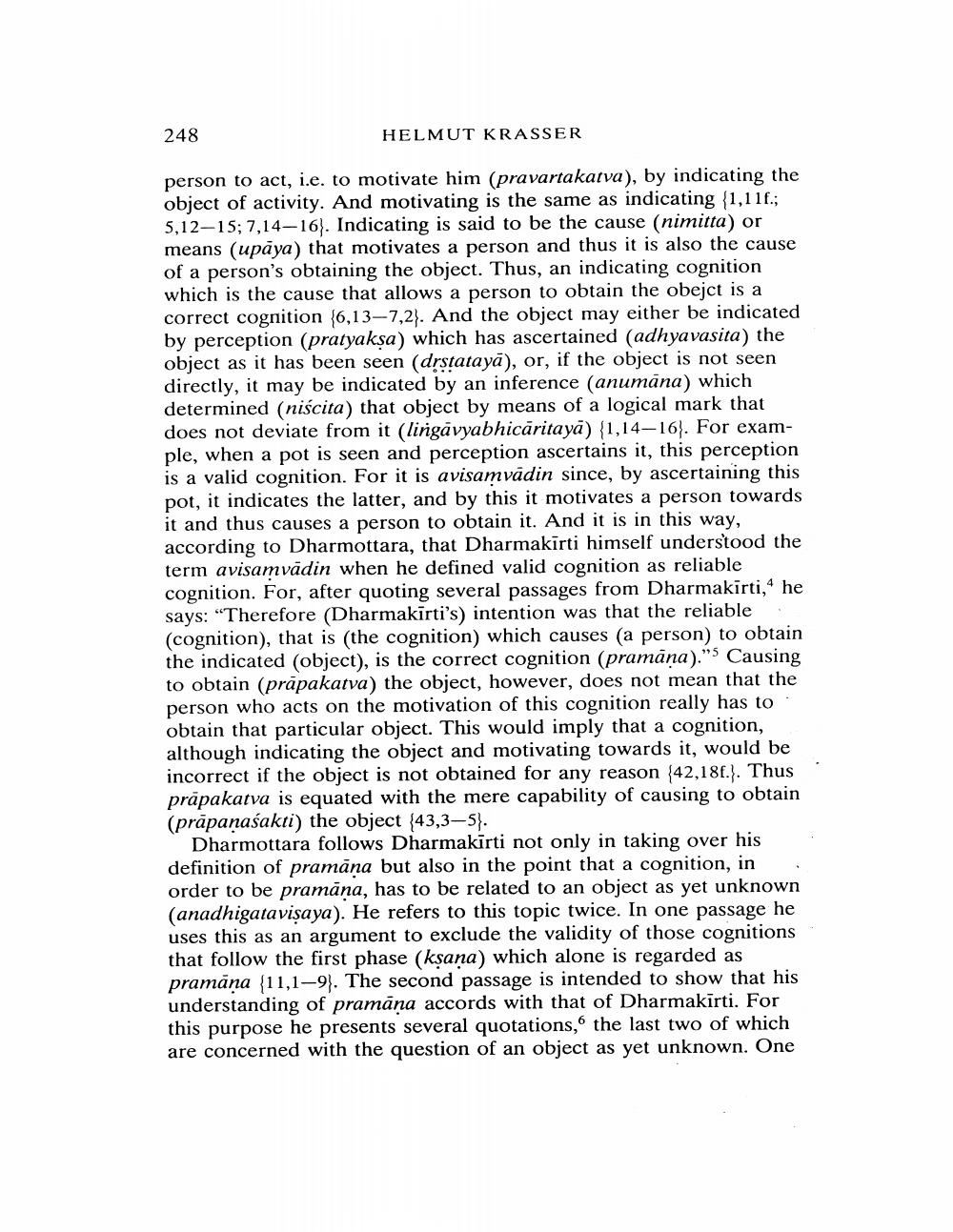Book Title: Dharmottaras Theory Of Knowledge In His Laghupramanyapariksa Author(s): Helmut Krasser Publisher: Helmut Krasser View full book textPage 2
________________ 248 HELMUT KRASSER person to act, i.e. to motivate him (pravartakatva), by indicating the object of activity. And motivating is the same as indicating {1,11f.; 5,12-15; 7,14-16). Indicating is said to be the cause (nimitta) or means (upāya) that motivates a person and thus it is also the cause of a person's obtaining the object. Thus, an indicating cognition which is the cause that allows a person to obtain the obejct is a correct cognition 6,13–7,2). And the object may either be indicated by perception (pratyakşa) which has ascertained (adhyavasita) the object as it has been seen (drstatayā), or, if the object is not seen directly, it may be indicated by an inference (anumāna) which determined (niścita) that object by means of a logical mark that does not deviate from it (lingāvyabhicăritaya) (1,14-16). For example, when a pot is seen and perception ascertains it, this perception is a valid cognition. For it is avisamvādin since, by ascertaining this pot, it indicates the latter, and by this it motivates a person towards it and thus causes a person to obtain it. And it is in this way, according to Dharmottara, that Dharmakirti himself understood the term avisamvādin when he defined valid cognition as reliable cognition. For, after quoting several passages from Dharmakirti," he says: “Therefore (Dharmakirti's) intention was that the reliable (cognition), that is (the cognition) which causes (a person) to obtain the indicated (object), is the correct cognition (pramana)."' Causing to obtain (prāpakatva) the object, however, does not mean that the person who acts on the motivation of this cognition really has to obtain that particular object. This would imply that a cognition, although indicating the object and motivating towards it, would be incorrect if the object is not obtained for any reason 42,18f.. Thus prapakatva is equated with the mere capability of causing to obtain (prāpanaśakti) the object {43,3—5). Dharmottara follows Dharmakīrti not only in taking over his definition of pramāna but also in the point that a cognition, in order to be pramana, has to be related to an object as yet unknown (anadhigatavisaya). He refers to this topic twice. In one passage he uses this as an argument to exclude the validity of those cognitions that follow the first phase (ksana) which alone is regarded as pramāna 11,1-9. The second passage is intended to show that his understanding of pramāna accords with that of Dharmakirti. For this purpose he presents several quotations, the last two of which are concerned with the question of an object as yet unknown. OnePage Navigation
1 2 3 4 5 6 7 8 9 10 11 12 13 14 15 16 17 18 19 20 21 22 ... 25
